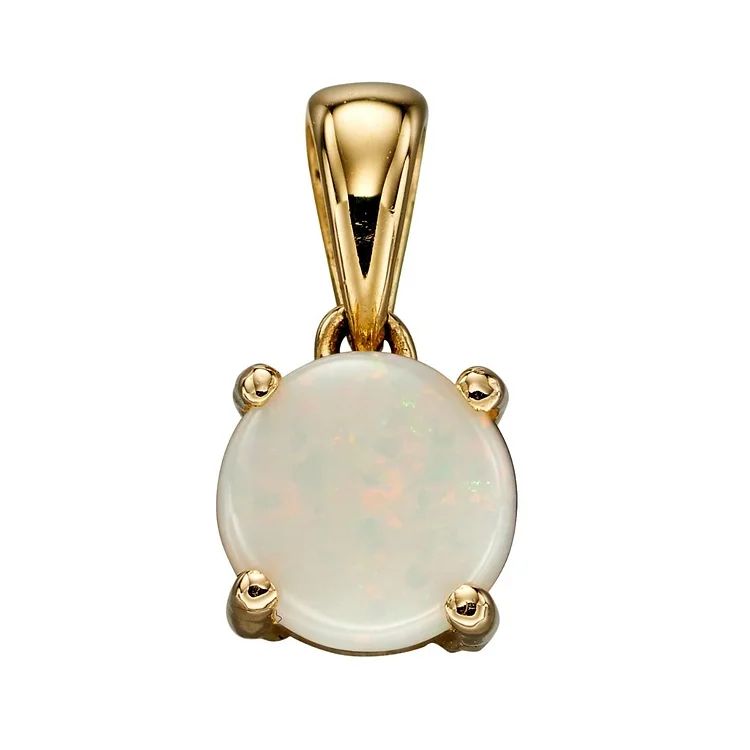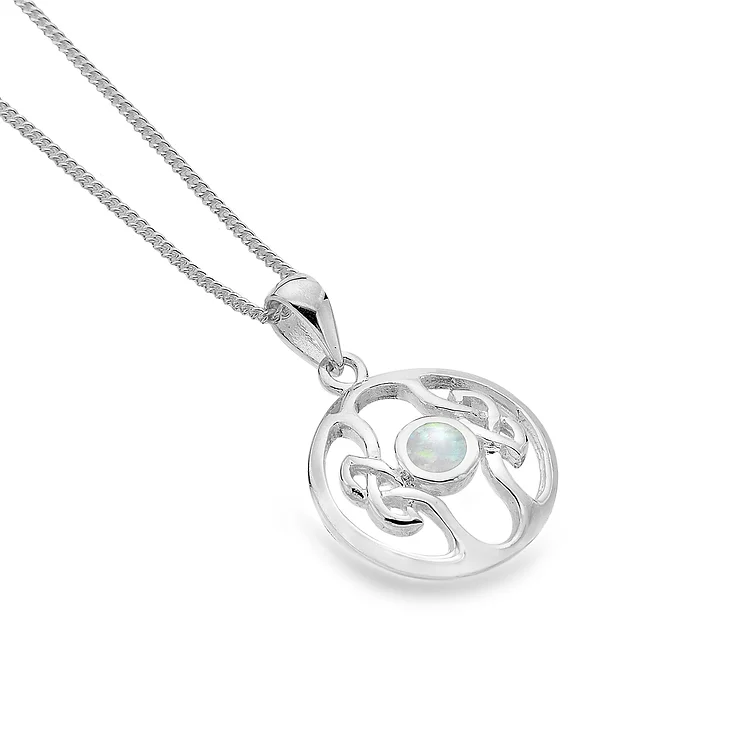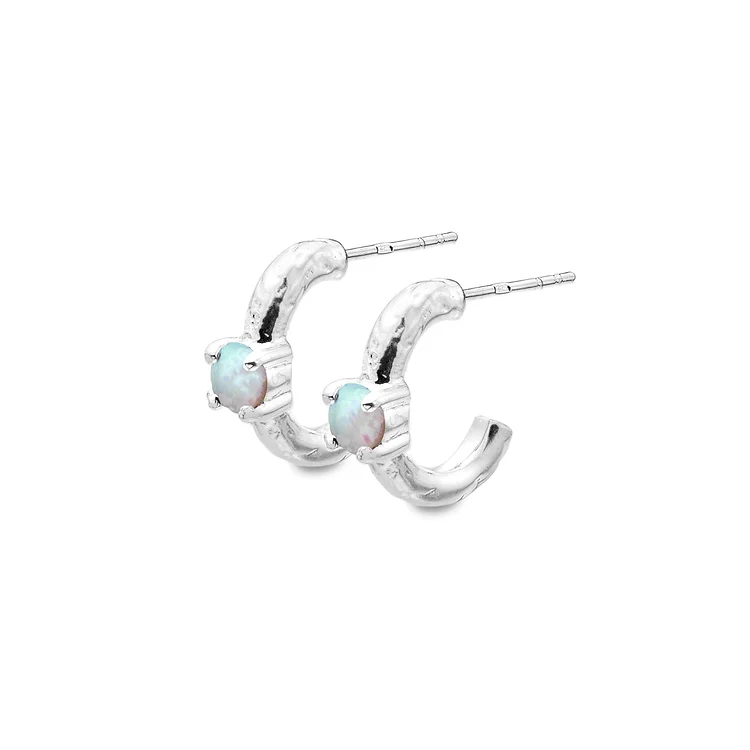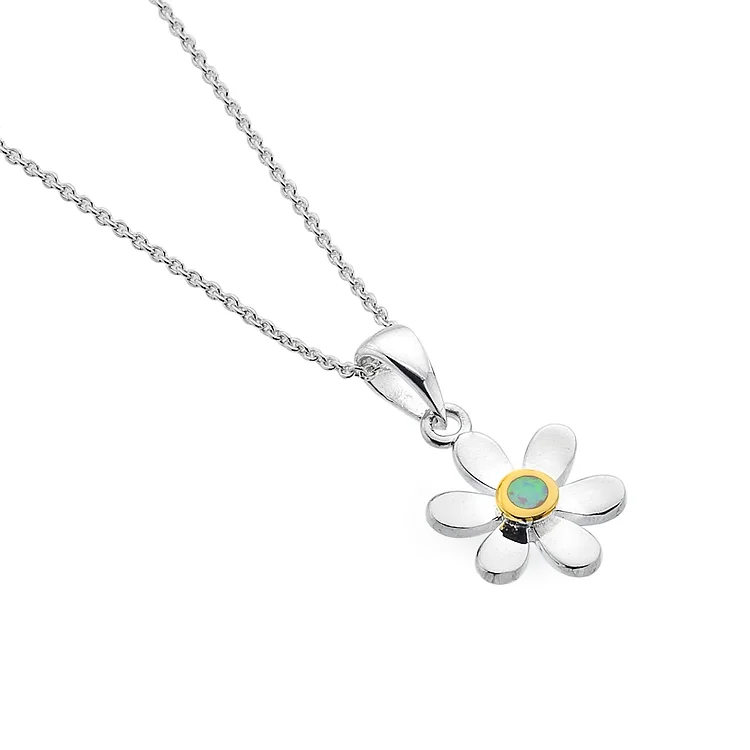As a gemstone expert at Sennen Jewellery, I'm always fascinated by October's two enchanting birthstones: the traditional October birthstone, opal and the modern October birthstone, tourmaline. The birthstone meaning for opal and tourmaline encompasses symbolic meanings and historical significance, with attributes such as emotional well-being, creativity, and healing properties.
I love sharing the beauty of October birthstones in jewellery designs; October's birthstone opals are known for their kaleidoscopic hues that shift and shimmer under the light. On the other hand tourmaline impresses with its broad spectrum of colours, ranging from vibrant pinks to deep greens.
In this article, I'll explore their physical properties, historical backgrounds, and the singular charm of these precious stones, offering a guide for fellow October babies and jewellery aficionados alike.

October Birthstones Key Points Summary
Two October Birthstones: Explore the captivating world of opal and tourmaline, the traditional birthstone and modern birthstone for October.
Physical Properties and Formation: Understand the geological origins and characteristics that make these stones both beautiful and unique.
Styling Recommendations: Gain insights from Sennen Jewellery on how to stylishly incorporate the birthstone for October into both everyday fashion and special occasions.
Types of Opal: From the radiant black opal to the intriguing boulder opal, discover the varieties that make opal a standout stone.
Historical and Modern Significance: Learn about the cultural and historical importance of these gems and how modern interpretations continue.
Physical Properties and Formation

Natural Opal
Opal, the main October birthstone, is a precious stone famed for its unique ability to diffract light, showcasing a play of multiple colours known as ‘opalescence.’ This phenomenon can display mesmerizing rainbow hues, making each opal a spectacle of shifting colours.
Unlike the structured crystal formation of tourmaline, opal is amorphous, meaning it does not have a defined crystalline structure. This gem forms from a solution of silicon dioxide and water.
As water runs down through the earth, it picks up silica from sandstone, and deposits this silica-rich solution into cracks and voids. Over time, the water evaporates, leaving behind a silica deposit that forms opal. This process can take millions of years, with each opal capturing a unique pattern of colour and brilliance.

Australia's Coober Pedy, often called the 'opal capital of the world,' features a distinctive landscape shaped by the remnants of opal mining.
The town's unique charm and otherworldly scenery have made it a fascinating backdrop for the arts and a popular filming location (for example it was a location for both Mad Max Beyond Thunderdome and Priscilla, Queen of the Desert.
It's also home to underground houses where residents and tourists find cooler temperatures. Historically, the region draws connections between opal mining in Australia and the migration of Cornish miners seeking new opportunities, highlighting the deep-rooted relationship between opals and Cornish jewellery.
Types of Opal

Opals are divided into several categories based on their colour patterns, transparency, and the presence of colour play:
Crystal Opal: Known for its transparency and the ability to see through to the hues beneath, crystal opal is one of the most sought-after varieties.
Boulder Opal: Characterized by thin layers of opal that form in the crevices of ironstone boulders, boulder opals are valued for their dramatic colour contrast and durability.
Black Opal: The most valuable of all opals, black opal features a dark body tone that enhances the vibrancy of the opal's play of colours. It is predominantly mined in Lightning Ridge, Australia.
Opal Doublets and Fire Opal: Opal doublets are created by adhering a slice of precious opal to a backing, often of black material, to enhance the stone's colour play. Fire opal is characterized by its warm body colours from yellow to deep orange, usually displaying no colour play but is cherished for its fiery, translucent hues.
Pink Tourmaline Birthstone

Tourmaline, the alternative October birthstone, displays a fascinating array of colours and forms due to its complex crystalline structure.
This gemstone is primarily composed of boron silicate minerals mixed with elements like iron and magnesium, which impart a variety of hues.
The crystals are typically elongated and triangular in cross-section, with striated faces. Pink tourmaline, in particular, owes its striking colour to traces of manganese, while green tourmaline’s rich shade is derived from iron content.
Tourmaline crystals form in pegmatite and metamorphic rocks, and can grow to substantial sizes, making them ideal for statement jewellery pieces. Among the unique colour combinations that can be found, watermelon tourmaline is a highly prized variation, featuring green and pink colours that make it a unique gemstone for creative October birthstone jewellery designs.
Pink tourmaline has captivated jewellery lovers for centuries with its vibrant hues ranging from delicate pastel to deep fuchsia. Pink tourmaline is rarer in deeper shades, making it particularly prized.
Found in mines across Brazil, Africa, and the USA, pink tourmaline is accessible and popular in various forms of October birthstone jewellery.
October Birthstone Alternative: Green Tourmaline
Green tourmaline is another top choice for October, celebrated for its vibrant, life-affirming shades. It is often associated with growth, renewal, and healing, making it a popular choice among those who prefer a gemstone that symbolizes vitality.
The History of Opals and Tourmalines

Opals have been treasured since antiquity, regarded as symbols of purity and hope by the Romans and considered lucky during the Middle Ages.
Tourmaline's history is equally rich, with early traders mistaking these colourful gems for emeralds. It was not until the 1700s that tourmaline was recognized as a distinct mineral, valued by the Dutch for its ability to attract and repel hot ashes.
Healing Properties and Symbolism of October Birthstones
Opal Symbolism and Healing Properties
Opal is often associated with inspiration, creativity, and optimism. Its dazzling play of colours has made it a symbol of hope and purity through the ages.
Many cultures have cherished opal for its supposed therapeutic properties, believing it to help in expressing one's true self.
In crystal healing, opals are thought to enhance vision, soothe the nerves, and bolster the immune system. They are particularly linked to emotional healing, offering comfort and peace to those who wear them.
Tourmaline Symbolism and Healing Properties
Tourmaline is revered not just for its beauty but also for its comprehensive spectrum of healing qualities. Each colour of tourmaline is believed to hold different healing properties. For instance, pink tourmaline is associated with matters of the heart, promoting compassion and gentle healing of emotional pain. Green tourmaline is said to foster courage, strength, and stamina. Tourmaline, in general, is considered a protective stone that can repel negative energies and is often used in meditation for its grounding effects.
Famous and Valuable Opals
Opals are celebrated not only for their enchanting play of colours but also for the unique stories and historical significance attached to some of the world's most famous specimens. Below are details of several of the most well known opals in the world.
Olympic Australis

Extracted from Coober Pedy, South Australia, in 1956, the Olympic Australis is one of the largest and most valuable gem-quality opals ever found.
Weighing an impressive 17,000 carats (3.4 kg), its name was derived from the Olympic Games, which were taking place at the time of its discovery.
The Olympic Australis is esteemed for its size, but its vibrant array of colours across the entire spectrum also contributes significantly to its value.
Black Prince

Originally known as the "Harlequin Prince," the Black Prince opal was found in 1915 at Lightning Ridge, Australia.
It is a black opal, renowned for the intensity and variety of its colour play. The gem was named after Prince Edward, earning it regal distinction.
This opal is historically significant due to its presence in the Royal Court of Britain and has been showcased in various exhibitions worldwide.
Fire of Australia

The Fire of Australia is another magnificent specimen, also hailing from Coober Pedy. Discovered in 1946, it is one of the finest uncut opals in the world, weighing approximately 998 carats.
The Fire of Australia exhibits a brilliant, fiery mix of colours, from red to green and gold, representing the vivid nature of opal’s beauty. This opal is particularly valued for its large, intact form and the intensity of its colours, which cover the entire surface.
Aurora Australis
The Aurora Australis was discovered in 1938 at Lightning Ridge and is noted for its exceptional colour range and pattern, with a large, flawless red center that transitions out to green and blue. Weighing 180 carats, it features a black base that enhances the vividness of its colours. The Aurora Australis is often considered the world's most valuable black opal due to its size, colour spectrum, and the distinctiveness of its pattern.
The Virgin Rainbow

The Virgin Rainbow is perhaps the most spectacular of all famous opals. It is an opalized fossil, which adds to its rarity. This piece is especially renowned for its ability to glow in the dark, displaying an incredible spectrum of colours that seem to illuminate from within. Found in the opal fields of South Australia, the Virgin Rainbow represents the extraordinary geological processes that create opals.
Sennen Jewellery's Styling Recommendations
Choosing the right settings and metal for your birthstones can transform the way they interact with light and colour, enhancing their natural beauty.
Opal and tourmaline, with their vivid colour play and diverse hues, offer endless possibilities for creative and eye-catching jewellery designs.
Here are some styling tips from Sennen Jewellery to help you make the most of these stunning October birthstones.
Styling Opal Jewellery
Opal's unique play of colour makes it a versatile choice for various jewellery settings:
Yellow Gold: Opal looks spectacular when set in yellow gold. The warm tones of the gold enhance the opal’s fiery colours, creating a striking contrast that is both elegant and vibrant.
Silver Settings: The coolness of silver complements the spectral dance of colours in opal, especially in more transparent varieties. Silver settings can highlight the subtle beauty of lighter opals, making them stand out in pendants and earrings.
Light-Catching Designs: Pendants and earrings are particularly effective for showcasing opal. These pieces move with the wearer, catching light from different angles and allowing the opal’s play of colour to shine brilliantly.
Opalite in Silver Jewellery: While opalite is not a natural gemstone but a man-made glass that resembles opal, its translucence and lustrous blue to milky white colouring make it a popular choice in silver settings. This combination is especially appealing for those who appreciate the look of opal but are seeking a more affordable alternative.
Custom Commissions: For those looking to invest in top-quality gemstones, Sennen Jewellery offers commissions with black opals, known for their intense colours and mesmerizing depth. A custom piece designed around a high-quality black opal can be a stunning addition to any jewellery collection.
Styling Tourmaline Birthstone Jewellery

Tourmaline's array of colours provides a wide range of styling options, from subtle to bold:
Monochromatic Elegance: Using a single hue of tourmaline, like deep green or vibrant pink, in a monochromatic setting can create a sophisticated and cohesive look. Consider a solitaire tourmaline ring or a set of stud earrings for a simple yet elegant style.
Mixed Metal Settings: Tourmaline looks stunning against both gold and silver. Try mixing metal types in multi-stone pieces to highlight the versatility of tourmaline’s colour spectrum.
October Birthstone: Final Thoughts
As a lover of gemstones, I find that opal and tourmaline, October's birthstones, truly enrich the lives of those born this month with their stunning beauty and deep symbolism. Whether you're captivated by opal's vibrant play of colors or drawn to tourmaline's diverse hues, these gemstones are perfect for creative jewellery designs.
FAQs: October Birthstones
What makes opal and tourmaline the perfect October birthstones?
Opal and tourmaline each bring a unique spectrum of colours and have historical significances that make them ideal for those born in October, reflecting the variety and beauty of the autumn season.
What is the difference between boulder opal and black opal?
Boulder opal is found within ironstone boulders and typically shows a thin layer of opal, which often has a dramatic colour contrast with its dark matrix. Black opal, with its dark body colour, enhances the vibrancy of the opal's play of colours, making it one of the most valued types.
Tips for caring for tourmaline jewellery?
Tourmaline should be cleaned with mild soap and warm water. It is best to avoid ultrasonic and steam cleaners as tourmaline can be heat sensitive.
Tips for caring for opal jewellery?
Opal is a delicate gemstone that requires careful handling and specific care to maintain its beauty and integrity. Here are some essential tips for caring for opal jewellery:
Avoid Sudden Temperature Changes: Opals can be sensitive to extreme changes in temperature, which might cause them to crack. Avoid wearing opal jewellery in environments where temperature fluctuates dramatically, such as in very hot or very cold conditions.
Keep Away From Water: Prolonged exposure to water can weaken an opal’s colour play. It's advisable to remove opal jewellery before swimming, showering, or doing dishes.
Clean Gently: Clean your opal jewellery using a soft, dry cloth or a brush with soft bristles. If necessary, you can use a small amount of mild detergent in lukewarm water to gently wash the stone, but avoid soaking it. Make sure to dry the jewellery thoroughly with a soft cloth.
Avoid Harsh Chemicals: Chemicals found in perfumes, soaps, and other household cleaners can damage opals. It’s best to put on your opal jewellery after applying cosmetics and perfumes, and to take them off while cleaning or applying hand sanitizer.
Store Properly: Opals should be stored separately from other jewellery to prevent scratches. Wrap them in a soft cloth or place them in a padded jewellery box. Avoid storing opals in excessively dry conditions or in direct sunlight, as they can lose water and potentially crack.
Regular Inspections: It's a good idea to have your opal jewellery inspected by a professional jeweler once a year to check for any potential damage to the setting or the stone itself. This can help catch any issues early before they become more serious.
Our Top Picks of Opal and Sterling Silver Opalite Jewellery
Take a look at our curated collection that marries traditional craftsmanship with contemporary design.







Comments